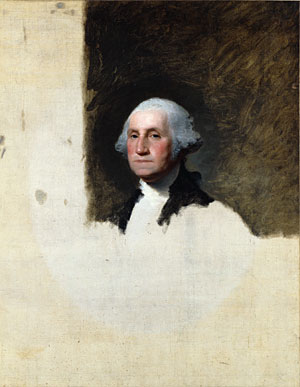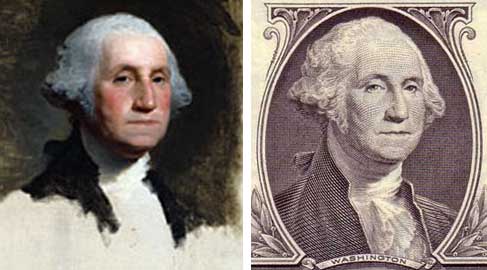Facts About United States Paper Currency
- Two numbering systems are used to uniquely identify currency, Friedberg (FR) Numbers (from Robert Friedberg), or Krause-Lemke (KL) Numbers (from Chester L. Krause and Robert F. Lemke).
- The Bureau of Engraving and Printing produces 37 million notes a day with a face value of approximately $696 million.
- According to moneyfactory.com, approximately 8.4 billion notes were printed in 2012. That includes every denomination and totals over $358 billion.
- There is no spider or owl on the $1 Federal Reserve Note.
- 95% of the notes printed each year are used to replace notes already in circulation. 45% of the notes printed are $1 notes.
- The first paper currency issued by the U.S. Department of the Treasury were Demand Notes Series 1861.
- During the Civil War period, the Bureau of Engraving and Printing was called upon to print paper notes in denominations of 3 cents, 5 cents, 10 cents, 25 cents, and 50 cents. The reason for this is that people hoarded coins because of their intrinsic value which created a drastic shortage of circulating coins.
- In 1929, the size of currency was reduced to about ⅔'s of its former size (22% smaller) when production was converted to 12-subject plates. The familiar portraits and back designs of our currency were also established at that time.
- A stack of currency one mile high would contain over 14.5 million notes.
- The approximate weight of a currency note, regardless of denomination is (1) one gram. There are 454 grams in one (1) U.S. pound, therefore, there should be 454 notes in (1) one pound (Avoirdupois system). If the troy system were used, there are (12) twelve ounces in (1) one pound; therefore, if one note weighs approximately (1) one gram, then (1) troy pound contains approximately 375 notes.
- If you had 10 billion $1 notes and spent one every second of every day, it would require 317 years for you to go broke.
- Currency paper is composed of 25% linen and 75% cotton. Red and blue synthetic fibers of various lengths are distributed evenly throughout the paper. Prior to World War I the fibers were made of silk.
- Between the Fort Worth, Texas and the Washington, DC Facilities approximately 18 tons of ink per day are used.
- Have you ever wondered how many times you could fold a piece of currency before it would tear? About 4,000 double folds (first forward and then backwards) are required before a note will tear.
- The following information regarding the average life of a Federal Reserve Note was provided by the Federal Reserve System — Please note that the life of a note depends on its denomination:
| $1 | 42 months |
| $5 | 16 months |
| $10 | 18 months |
| $20 | 24 months |
| $50 | 55 months |
| $100 | 89 months |
- Our present sized currency measures 2.61 inches wide by 6.14 inches long, and the thickness is .0043 inches. If each currency note printed was laid end to end, they would stretch around the earth's equator approximately 24 times. Larger sized notes in circulation before 1929 measured 3.125 inches by 7.4218 inches.
- On December 31, 1968 the number of high-denomination notes outstanding was:
| $500 | 488,295 |
| $1,000 | 291,894 |
| $5,000 | 634 |
| $10,000 | 383 |
- 100 of the 383 $10,000 notes outstanding at the end of 1968, were located at Binion's Horseshoe.
- The 100 dollar note has been the largest denomination of currency in circulation since 1969.
- On July 14, 1969 issuance of $500, $1,000, $5,000, and $10,000 notes was discontinued.
- The obverse and reverse of the Great Seal of the United States appeared in a currency design for the first time when the $1 Silver Certificate. Series 1935, was issued. The Seal dates back to 1782 — before the Constitution.
- The motto, "In God We Trust," became a part of the design of United States currency in 1957 and has appeared on all currency since 1963.
- The largest note ever printed by the Bureau of Engraving and Printing was the $100,000 Gold Certificate, Series 1934. These notes were printed from December 18, 1934 through January 9, 1935 and were issued by the Treasurer of the United States to Federal Reserve Banks only against an equal amount of gold bullion held by the Treasury. These notes were used for transactions between FRBs and were not circulated among the general public.
- The origin of the "$" sign has been variously accounted for, however, the most widely accepted explanation is that the symbol is the result of evolution, independently in different places, of the Mexican or Spanish "P's" for pesos, or piastres, or pieces of eight. The theory, derived from a study of old manuscripts, is that the "S" gradually came to be written over the "P," developing a close equivalent of the "$" mark. It was widely used before the adoption of the United States dollar in 1785.
- The engraving for George Washington on the $1 note is derived from Gilbert Stuart's "Athenaeum" portrait of George Washington in 1796. It is considered the most famous painting of the first president, but it was never finished.
 |  | | Athenaeum Portrait by Gilbert Stuart, 1796 | Portrait flipped vertically and compared to engraving on $1 note |
- The vignette on the back of the $100 note is Independence Hall in Philadelphia. There are three people depicted in the engraving. Two (a man and a woman) are in front of the hall close to the building; the third person is a man pictured looking toward the building. There is no record that the man and woman are embracing.
The hands of the clock are set at approximately 4:10. Although the time is not readily identifiable to the naked eye, it may be verified if examined under twenty-fold magnification. There are no records explaining why that particular time was chosen.
- The vignette on the reverse of the five-dollar note depicts a likeness of the face of the Lincoln Memorial as it appeared in 1922 when it was first dedicated. At that time, there were only 48 states that made up the United States of America. The names of 26 states were engraved on the front of the Memorial. This is why only the names of 26 states appear in the vignette on the reverse of the five-dollar note.
In the upper frieze of the facade in the vignette the states are from left to right:
Arkansas, Michigan, Florida, Texas, Iowa, Wisconsin, California, Minnesota, Oregon, Kansas, West Virginia, Nevada, Nebraska, Colorado, and North Dakota.
In the lower frieze from left to right the names of the states are:
Delaware, Pennsylvania, New Jersey, Georgia, Connecticut, Massachusetts, Maryland, Carolina, New Hampshire, Virginia and New York.
- During Fiscal Year 2003, it cost approximately 6 cents per note to produce 8.2 billion U.S. paper currency notes. In 2012, it cost about 8.7 cents.
- Notes are bundled and packaged at the Bureau of Engraving and printing in this method:
- 100 notes make note strap
- 10 straps (1,000 notes) make a bundle
- 4 bundles (4,000 notes) make a brick
- 4 bricks (16,000 notes) make a cash pack
- 40 cash packs (640,000 notes) make a skid
- 490 notes weigh 1 pound. A million dollars of $1 notes would weigh 2,040.8 pounds, and a million dollars of $100 notes would weigh 20.4 pounds.
|

